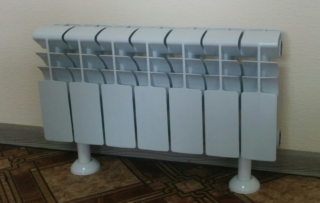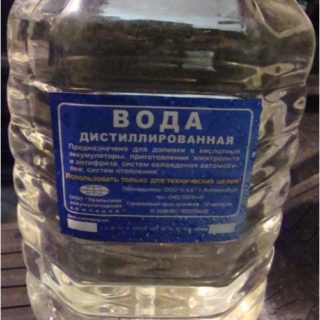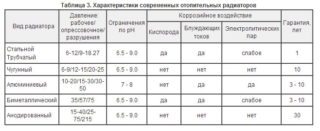In apartments and houses, obsolete cast-iron batteries are replaced with aluminum or bimetal products. The consumer needs to compare devices according to several criteria, determine their heat efficiency and cost. The main difference between bimetallic radiators and aluminum radiators is the material of manufacture, but there are other factors for finding the difference.
Comparison criteria for aluminum and bimetal batteries
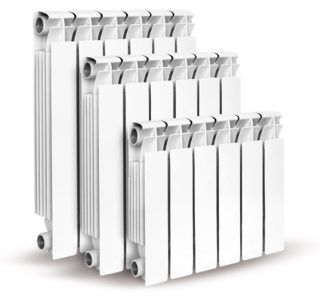
To determine the best device, you need to understand the design and material features:
- Aluminum models are made from an alloy of aluminum with silicon to increase strength. Casting is carried out in sections or in blocks. A thread with a sealing layer at the joints is used to connect the elements. Sections are designed on the basis of the formation of "petals" in the assembly. In order to increase efficiency, convection holes are made between the petals.
- Externally, bimetal radiators are difficult to distinguish from aluminum. Sections are performed in the form of a steel pipe in an aluminum jacket that increases heat transfer. Nipples or threaded connections are used to connect the elements. Sections are equipped with separate nozzles of the collector system along which water moves.
Bimetal is stronger than aluminum, therefore the design withstands pressure drops and water shocks.
Heating area
Aluminum appliances with 11 sections can heat a room of 14 m2. The power of each section will be 160 watts. Bimetallic devices from 11 sections are suitable for rooms on 20 m2. The power of one element will be 180 watts.
SNiP indicates that one bimetallic section heats 1.8 m2, aluminum - 1.9 m2.
Durability
Service life is another criterion by which aluminum devices differ from a bimetallic radiator. The first will work until 15 years, because they are sensitive to pH. If it is more than 7-8, products may leak. The second modifications are designed for 20 years of use, since they are equipped with an internal steel pipe.
Cost
Depending on the manufacturer, bimetal batteries cost from 370 to 5750 rubles. per section, from aluminum - from 319 to 4080 rubles. per section. The difference is not so significant, so you need to compare other points.
Coolant compatibility
Aluminum batteries are exposed to chemical additives, bimetal batteries are suitable for central heating with process water - this is also a difference.
Heat dissipation
The characteristic of the temperature of the coolant also allows you to compare the materials of radiator devices. At a temperature of 70 degrees, the heat transfer coefficient of aluminum is 200 watts. Bimetal gives off less heat - from 160 to 180 watts.
Number of Section Elements
There is no difference by this criterion - you can install models from 6 to 12 sections.
Mounting Features
Bimetal and aluminum heating batteries have differences in connection order. The former are lightweight, so sections are added in place.
Aluminum is a fragile material, therefore it is connected to the heating main with aluminum pipes. The radiator may break during installation.
Pros and cons of radiators from different materials
Metal batteries can be connected to the heating system of a private house or apartment. Before connecting, you need to understand the pros and cons of devices.
Aluminum radiators
Due to the lightness of the material, they are characterized by ease of transportation, as well as a number of advantages:
- compactness - the width of the sectional elements is less than that of cast-iron;
- high heat dissipation;
- ability to withstand high pressure;
- Convenience of temperature control using a thermostat;
- selection for the design of any room.
The disadvantages of aluminum batteries include:
- compatibility only with neutral acid-base composition of water;
- the need to install air vents to prevent traffic jams;
- risks of leaks at joints;
- uneven heat transfer.
The bulk of the thermal energy is concentrated on the ribs of the aluminum sections.
Bimetal radiators
The complexity of the manufacturing technology (injection molding, spot welding) affects the cost of the device. Bimetallic products have a number of advantages:
- economical flow rate due to the small internal volume;
- compatibility with any composition of the coolant;
- ability to withstand pressure with operating parameters up to 40 atm .;
- the minimum temperature of the liquid in the pipes is 130 degrees;
- high heat dissipation achieved with aluminum fins;
- coating resistance - it is painted in two stages with surface polymerization.
The disadvantages of bimetal include:
- small heat transfer due to the steel core;
- operating costs - because of the high hydraulic resistance, more energy is needed to transfer the coolant;
- risks of steel corrosion during improper use.
To connect the bimetallic sections, paronite gaskets are used.
Application for various heating purposes
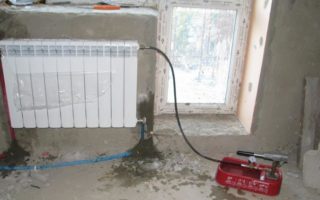
After considering the main characteristics, pluses and minuses of the devices, you can decide on an option for a heating system.
Apartment heating main
Bimetallic models were created for use in urban environments. Water poured into pipes has an aggressive chemical composition that does not affect the quality of the steel core. The element also provides resistance to hydrodynamic shocks and pressure fluctuations. The small cross section of the water channels allows the batteries to quickly fill with water from a centralized boiler room.
Private house

The best option is aluminum devices that require a high-quality coolant. The batteries are easy to operate at a minimum pressure of 2 to 3 atm., And to equip the temperature with a thermostat.
Country cottage
For heating in winter, it is better to use aluminum modifications. They will give maximum heat transfer, unlike bimetallic ones, which are expensive and will quickly break.
How to distinguish devices visually
An external factor is often misleading to buyers. Batteries have a similar appearance - metal rectangles with flat edges and the same number of sections. To distinguish devices with an identical number of elements, you can pick them up right in the store. Aluminum will be lighter.
The second way of checking is with a magnet, ordinary or neodymium. The product must be moved from the edge to the center. The steel surface will create a slight attraction.
When choosing radiators made of aluminum and bimetal, several factors need to be compared - cost, installation features, heated area.Owners of private houses can stay on aluminum options; bimetallic ones are justified in apartments.

